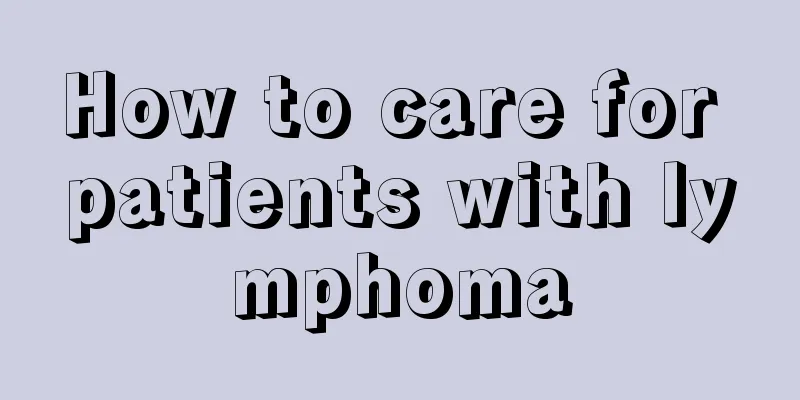What are the sequelae of herpes zoster?

|
Shingles is mainly a viral skin disease caused by blisters, and when this phenomenon occurs, there will be certain neuralgia. If it is not treated in time, a series of sequelae will appear. This disease has a great impact on the patient's daily life. Patients must learn more about the sequelae caused by it. So, what are the sequelae caused by shingles? Before the onset of the symptoms of post-herpetic skin, there is burning pain in the local skin, accompanied by mild fever, fatigue, weakness and other systemic symptoms. However, there may be no prodromal symptoms, and scattered erythema may appear on the skin after 1 to 3 days. Subsequently, numerous clusters of papules ranging in size from millet to mung bean appear on the erythema and quickly turn into blisters. The blister wall is tight and shiny, the blister fluid is clear, and there are small depressions on most of the blister surface. After a few days, the blister fluid becomes turbid and purulent, and erosions form after rupture, which finally dry up and form scabs. After the scabs fall off, temporary erythema is left behind. The general course of the disease is about 2 to 4 weeks. Patients with mild symptoms only have erythema and papules, but no blisters, which is called incomplete herpes zoster. Gangrenous herpes zoster may occur in patients with malignant lymphoma, acute systemic lupus erythematosus, and the elderly and infirm, leaving scars after healing, which is called gangrenous herpes zoster. Shingles can spread throughout the body, often accompanied by high fever, pneumonia or encephalitis. In severe cases, if not treated in time, it can lead to death. This is called generalized herpes zoster. Herpes is mostly distributed on one side, not in a band-like pattern, and sometimes may cross the midline of the trunk. This is due to the nerve endings crossing the midline. The thoracic, cervical and facial trigeminal nerve distribution areas are the most common sites. Usually only one branch of the trigeminal nerve is affected. Local lymph nodes are often swollen and painful. Neuralgia is the main symptom of this disease. The acute phase is due to the inflammatory response of the ganglia, while the late phase neuralgia is caused by post-inflammatory fibrosis of the ganglia and sensory nerves. Sometimes there is severe neuralgia before herpes appears, which is often misdiagnosed as acute abdomen or angina pectoris. Elderly and frail patients or patients with lymphoma often have sequelae of neuralgia, which can sometimes last for several months. If herpes occurs in the ophthalmic branch of the trigeminal nerve, conjunctival and corneal herpes may occur, leading to corneal ulcers and blindness, which is a serious complication. When the virus invades the facial nerve and auditory nerve, herpes occurs in the ear shell and external auditory canal, which may be accompanied by deep pain in the ear and mastoid, tinnitus, deafness, facial nerve paralysis, and loss of taste in the front 1/3 of the tongue. This is called herpes zoster facial paralysis syndrome. Sequelae of herpes zoster: prodromal pain. In addition, if there is a sequelae of herpes zoster - prodromal pain before the onset of herpes, severe rash and pain occurred during the acute phase of herpes zoster, or the longer the pain lasts, the higher the chance of developing postherpetic neuralgia. Postherpetic neuralgia not only makes the peripheral nerves sensitive, but also the central nervous system changes. The pain is constantly reinforced by the brain's memory, making it very difficult to treat. If shingles is not treated promptly and effectively, it will easily develop into postherpetic neuralgia, that is, after the herpes skin heals, the pain still exists, the lesion area will feel itchy and tender to the touch, and the pain will be spontaneous, paroxysmal, knife-like, lightning-like, or persistent burning or tightness-like. Patients must receive timely treatment when they develop shingles. They should eat more light foods and avoid eating too much spicy and greasy foods. Frequent consumption of spicy and greasy foods can have a great impact on the patient's body. They should also pay more attention to exercise, which is better. |
<<: What are the differences between bronchial asthma and asthmatic bronchitis?
Recommend
Hysterosalpingography
The health of the fallopian tubes is a criterion ...
What's the matter with blood in urine
Blood in urine is what we hear in TV commercials,...
How to make lips rosy
Applying lipstick every day is indeed a very trou...
What to do if you have lymphoma
Lymphoma is prone to swollen lymph nodes in the c...
What are the mid-stage symptoms of colorectal cancer
Rectal cancer should be treated in time. If the s...
How do patients with pancreatic cancer recover? It depends on the pathological stage
The prognosis of pancreatic cancer patients is ma...
What are the symptoms of lower limb phlebitis
If you stand or work for a long time, the chance ...
What are the early symptoms of lung cancer? Several early symptoms of lung cancer
Lung cancer is a very dangerous disease. Many peo...
What does it mean to cultivate one's mind and cultivate one's character?
Cultivating the mind and cultivating the characte...
What are the tips for unclogging a clogged water pipe?
Now many rural areas have begun to implement drin...
How long does it take to have a follow-up examination after gastric cancer surgery?
After gastric cancer surgery, it is generally nec...
Pain in the middle of my nose
Nowadays, there are quite a few people who judge ...
Basic Yoga Class
Yoga is a relatively difficult form of fitness, b...
Can drinking salt water in the morning help eliminate stool?
Daily health care should start in the morning. Th...
Helicobacter pylori carbon 13 positive
Helicobacter pylori is detected through the carbo...









